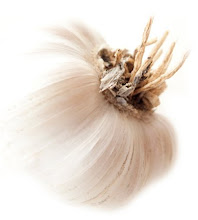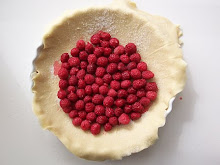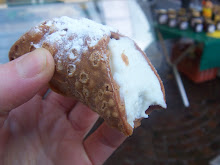 Pancake Day celebrations took an international theme this year.
Pancake Day celebrations took an international theme this year. Blueberry ricotta pancakes, chickpea flour pancakes, farinata Genovese and kaiserschmarrn, the latter being my contribution.
Besides breaking your teeth trying trying to pronounce the thing, it is genious.
Similar to making pancakes, this is the quicker, immediate satisfaction version, and even MORE comforting!
The general idea is to prepare the batter, which includes separating the eggs and whipping the egg whites before folding it back in the mixture, and then pouring the lot in one go to a large pan. This results in quite a mess, hence the name (the literall translation is 'emperor's mess'). However, this is organized, controlled mess, with the extra benefit of foreseeing it, and thus enjoying it.
 This is a slightly modified recipe taken from The Illustrated Kitchen Bible by Victoria Blashford-Snell and Brigitte Hafner.
This is a slightly modified recipe taken from The Illustrated Kitchen Bible by Victoria Blashford-Snell and Brigitte Hafner.kaiserschmarrn
serves 4
2/3 cup all-purpose flour
4 large eggs, separated, at room temperature
¼ - 2/3 cup whole milk
2 tbsp butter
¼ cup raisins (soaked in rum for an hour- optional)
For serving
Orange zest
cinnamon
Caster sugar
Whisk the flour, sugar, egg yolks and milk together in a bowl with a clean whisk until smooth.
Beat the egg whites in a separate bowl until stiff peaks form. Fold into the batter.
Melt the butter in a 20cm nonstick frying pan over medium heat.
Cook until the underside is browned. At this point you need to turn the pancake, thus begins the tricky part as its going to get messy.
Try to relax and enjoy it. You don’t want to fuss too much around it or you'll end up with an omelet.
Transfer to a plate and sprinkle with plenty of cinnamon, sugar and orange zest. That’s it.
Traditionally served with plum preserves or apple sauce on the side.


 When our time in Venice drew to a close, Venice objected. I think she didn’t want us to leave. Not yet. In fact, she was pretty clear about her wishes and took an active role in ensuring she would get her way.
When our time in Venice drew to a close, Venice objected. I think she didn’t want us to leave. Not yet. In fact, she was pretty clear about her wishes and took an active role in ensuring she would get her way.

 Its Carnevale in Italy; the two weeks celebration period that take place prior to Ash Wednesday and the somber lent period. A Valentines Day Latino Fiesta, for which I prepared the not so Latino Rugelach posed a challenge: carrying baked goods while simultaneously attempting to walk in high heels on the uneven, confetti clad, cobbled streets of Parma is not as easy at it sounds.
Its Carnevale in Italy; the two weeks celebration period that take place prior to Ash Wednesday and the somber lent period. A Valentines Day Latino Fiesta, for which I prepared the not so Latino Rugelach posed a challenge: carrying baked goods while simultaneously attempting to walk in high heels on the uneven, confetti clad, cobbled streets of Parma is not as easy at it sounds. The Latino connection to the Ashkenazi Jewish pastry may seem random, but had it not been for the discovery of the cocoa beans, this bundle of comfort and joy would not have reached its mythological stature. I prepared the traditional, chocolate filled, sugar glazed, moist and chewy version, like the ones I buy on a Friday morning, hoping they'd last the entire weekend this time, but instead are devoured while reading the weekend papers.
The Latino connection to the Ashkenazi Jewish pastry may seem random, but had it not been for the discovery of the cocoa beans, this bundle of comfort and joy would not have reached its mythological stature. I prepared the traditional, chocolate filled, sugar glazed, moist and chewy version, like the ones I buy on a Friday morning, hoping they'd last the entire weekend this time, but instead are devoured while reading the weekend papers. 

 In the spirit of intensive farming we are groomed, fed and fattened, to be cured and consumed. Feeding sessions are not far apart, nor are the visits to wineries.
In the spirit of intensive farming we are groomed, fed and fattened, to be cured and consumed. Feeding sessions are not far apart, nor are the visits to wineries. 







